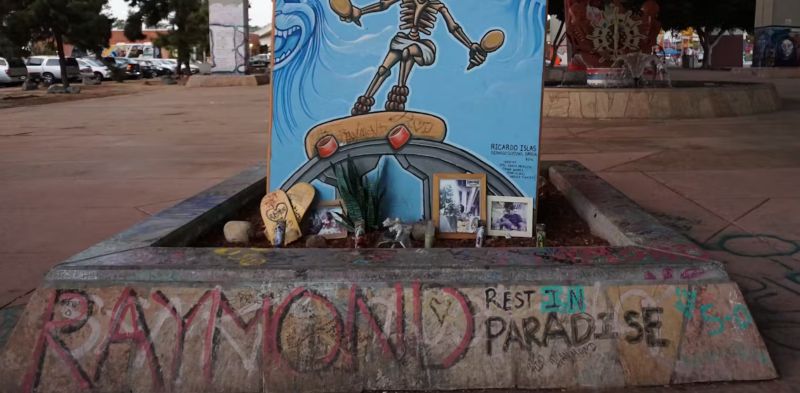
There is an almost universal insistence on “something rich and strange.”

By Dr. John Wren-Lewis
Late President
British Association for Humanistic Psychology
In earlier centuries, tales of people being miraculously rescued from death and returning with strange reports of other dimensions were the stuff of legend, superstition and religious propaganda. Today the miracles of science have made such occurrences almost commonplace, and scientists themselves, professionally trained in scepticism towards legend and superstition, are being impelled to investigate what such experiences mean.1 The phenomenon has even acquired the dignity of an official medical name reducible to initials–“Near-Death Experience” or NDE–and the 1980s saw the establishment of a prestigious International Association for Near-Death Studies, or lANDS, which publishes a first-class Journal of Near-Death Studies.2
One of the first facts to emerge from systematic study of the subject was that very large numbers of these experiences have gone unrecorded because sceptically-biassed medical authorities had simply dismissed them as hallucinations produced by the brain under stress, or by the drugs used in surgery. Indeed, many people have admitted keeping quiet about their experiences for fear of being thought crazy. Detailed questioning by sympathetic investigators has revealed, however, that amongst the many thousands of people who are nowadays snatched back every year from the very last stages of heart attacks, electric shock, drowning and other traumas, about one-third insist that they experienced something for which terms like “hallucination” are utterly inappropriate.
Individual descriptions vary enormously, and many experiences are simply called “indescribable,” but there’s an almost universal insistence on “something rich and strange,” like the opening-up of a whole new dimension in consciousness, which subsequently gives the experience a hitherto undreamed-of level of confidence, equilibrium and creative energy– all the symptoms, in fact, of sanity rather than craziness. Anxiety in general, and fear of death in particular, have somehow been dramatically reduced or even abolished by the experience, along with such everyday manifestations of anxiety as boredom, restlessness, competitiveness, acquisitiveness and aggression. No fantasy due to brain aberration has ever been known to produce effects like these, nor has any drug–NDEs quite often occur when no drug is involved. Yet the effects cannot be explained away simply as joi de vivre after a close shave, because such changes aren’t reported on anything like the same scale by the larger group of survivors who recall no special experience; on the contrary, such people often have greater fear of death precisely because the narrow escape has made them value life more.3
Moreover these are not just matters of anecdotal testimony. Psychologists such as Dr Kenneth Ring of the University of Connecticut4 and Dr Margot Grey in PhD research at the University of London5 have carried out psychological tests to confirm the very positive characteristics of post-NDE lives. Other investigators have shown that NDEs and their remarkable results are not confined to any particular sex, race, personality type, educational level, religious background, or socio-economic class; and they can happen to people with almost any prior philosophy of life, or no articulated philosophy at all. lANDS in the United States has even documented some remarkable accounts from children, which have been summarized in a book by Seattle pediatrician Dr Melvyn Morse, along with fascinating first hand accounts of some cases he has encountered in his own practice.6
The publication of such findings has started a snowballing effect, as more and more people who’ve had NDEs in the past are emboldened to come out of the closet, while even sceptical doctors–probably still a majority in the medical profession as a whole–are beginning to take the phenomenon seriously enough to contribute to the factual record of the evidence while reserving judgement about what the experiences mean. At this stage of the game, scepticism has an important role to play in this regard.
Of course, a healthy discipline of scepticism is essential in evaluating whether NDE reports are sincere or possibly fabricated for self-aggrandisement purposes now that the subject had begun to attract media attention, but that is a precaution to which any competent investigator should be alert. Equally important, but less often recognized, is the need for scepticism in looking for patterns in the data that might provide clues to what the experiences are really about. The human mind has a tendency, even in the most sincere enquirers, to jump to conclusions and then ignore, play down or distort any evidence that doesn’t fit. Five hundred years ago, Christopher Columbus saddled the native peoples of the American continent with the name “Indians” because he’d set out to find a round-the-world route to India and didn’t realize that he’d actually found a whole new continent. The same kind of mistake–should we perhaps call it the Columbus Confusion in the hope of ‘helping to nail it?–has occurred even in some hard-nosed physical sciences, and it’s very likely indeed to happen in a field of study which touches on deep human concerns, as does research into NDEs.
The purpose of this article is to suggest that the Columbus Confusion may be detected in the disproportionate amount of attention given to reports of people seeing their own prone bodies from outside (usually· from a point somewhere near the ceiling in the operating theatre, or a few feet above the car that has just crashed or the water into which they’ve fallen or whatever), and/or of travelling through a dark tunnel to a heavenly realm of light beyond. In the early days of NDE studies, in the 1970s, these two kinds of experience attracted the attention of many investigators, even though they occur in only a minority of cases, because they suggest that human consciousness may be independent of the physical brain and might make a transition to some non-physical realm when the body dies, as claimed in one way or another by religious traditions from time immemorial. Today these images have become so established in popular mythology that the Monty Python team could satirize the tunnel trip in their movie The Meaning of Life, depicting the heaven at the tunnel’s end as a luxury hotel with a Hollywood-style Grand Christmas Cabaret perpetually in progress.
This cannot be attributed simply to sensation-seeking journalists, though NDEs have received more than their share of attention from that quarter. Many serious researchers still lay special emphasis on the minority of NDEs which seem to indicate independence of consciousness from the brain–most notably, cases where the now-famous flat line on electronic brain-monitors seems to prove that the patient really has died, and those special “out-of-body experiences” (or OBEs) where the person reports travelling to a distant place and bringing back information they couldn’t have known by ordinary means.7 Any of course, such claims are important; if they can be substantiated beyond the serious possibility of fraud or coincidence, science will have to revise some of its current materialistic concepts about consciousness as simply a brain-function. This may however be a complete red herring in terms of understanding what NDEs in general are about, comparable to Columbus noticing an American native who happened to look like drawings of East Indian peoples.
For the plain fact is that most NDEs can’t really be taken as glimpses of an immaterial soul leaving the body and entering a literal Other World, any more than most native Americans look like East Indians; in both cases, the evidence has to be ignored or fudged to fit the model. In the first place, a great many NDEs don’t involve visions of any kind; experiences simply report feelings of indescribably blissful peace, or a kind of dreamless depth that somehow wasn’t unconscious, or an incredible sense of sinking into pure timeless love–yet their lives are still changed in extremely positive ways, and they still lose their former fear of death. Even amongst experiences that do seem I like other world visions, the vast majority can’t seriously be treated as literal glimpses of an under discovered country beyond the grave, because they contradict one another in many significant details
In some, for example, the heavenly landscape is a pastoral scene, in others a science-fiction style celestial city, in others an insubstantial cloudy space, in some a human scene almost justifying the Monty Python spoof. The much-publicized experiences of encountering long-decreased friends or relatives sometimes find them at the age they were when they died, sometimes (notably with deceased children) as old as they would now be if they’d lived on, sometimes (in the case of old people) miraculously rejuvenated or regenerated, and sometimes transfigured into shining angelic forms that are nonetheless somehow recognizable. A very small number of NDEs include visions of hellish regions, reminiscent of the guided tour given to Dante in the Divine Comedy, but the great majority find only heaven, even though the experiencers often are anything but saints.8
In fact it’s obvious, when all the evidence is considered, that play of imagination must be involved to a considerable degree in most visionary NOEs, even though experiencers commonly report an intense feeling of reality quite unlike any dream. Whatever kind of reality is being experienced in these apparent “otherworld journeys,” the visionary aspect of it clearly comes from the experiencer’s personal imaginative faculty in most cases, and therefore probably in all–and this consideration would still hold, from the mutually contradictory character of the visions, even if the flat line on the brain-monitors could somehow prove that consciousness was functioning independently of the brain.9 The same holds for experiences in which consciousness seems to range beyond the body in this world: for every “out-of-body-trip” that seems like an accurate psychic perception of real physical events (and some uncanny cases of this kind have been reported), dozens exist that are quite plainly plays of imagination, however real they seem, because they involve definite non-events. A dramatic example of this was given by the great Swiss psychologist Carl Jung when he had a near-fatal heart attack in 1944, long before the term NDE had been coined.10
He seemed to leave his body and soar high into space, getting a view of the earth’s globe such as no human eye had ever seen at that time, though astronauts have since done so. One might say it was a psychic perception befitting a man of global stature, as Jung felt himself to be. He also encountered an asteroid-type rock with a Hindu temple carved into it, named by a swami sitting in lotus-posture amidst flickering candles, and there are certainly none of those in outer space!
This obvious imaginative element in the most commonly described NDEs is of course one of the main reasons why many dogmatic religious authorities, who believe they already know from divine revelation what really happens at death, have joined hands with materialists in dismissing the whole phenomenon as mere fantasy, maybe even demonic deception. Several cases are on record of hospital chaplains doing this, thereby driving patients who’ve had NDEs firmly into the closet. In marked contrast, however, experiencers themselves, for all their insistence on felt reality, are usually very resistant to any kind of dogmatism about the supernatural realm., This was t1rst noted by Professor Ring in the United States,11 and has recently received strong confirmation from an Australian survey conducted by sociologist Dr Cherie Sutherland of the University of New South Wales.12 NDEs seem to have the effect of making the experiencers willing to acknowledge and affirm the validity of one another’s experiences despite differences, even though they all tend to make assertions like, “This is the most real thing that ever happened to me.”
Clearly, the word “real” is here being used to mean something quite other than “literal-and-not-involving-imagination,” and over the past few years many NDE researchers (of whom I have been one, ever since I nearly died of poisoning in 1983)13 have been coming to the conclusion that this is the essential point about the “new continent” discovered by travellers who return from the brink. Irrespective of whether or not NDEs turn out, further down the track, to prove the independence of consciousness from the brain, they are already describing discoveries of a normally unrecognized depth-dimension in consciousness itself, a dimension of intense aliveness that makes ordinary worldly existence seem like a mere play of shadows. Professor Ring, doyen of near-death investigators even though not himself an experiencer, was driven by his long-term in-depth questioning of experiencers to the conclusion that the positive life-changes following NDEs were shared by many who recalled only that “indescribably timeless happiness” and “peace past understanding”, with no otherworldly visions or out-of-body trips; some even denied any particular conviction about the possibility of survival beyond the grave, yet their anxiety about living and fear of dying had gone, because something of that sense of timeless reality had come back with them into continuing bodily life on earth. His conclusion, in his second book published in 1984,14 was that NDEs are most accurately categorized as exceptionally vivid and “secular” instances of the “spiritual awakening” normally ascribed to mystics.
In endorsing this conclusion from my own studies, I can speak with direct firsthand experience, since at the very time when Ring, then quite unknown to me, was preparing his findings for publication, I had just such an experience myself. It shattered my previous scepticism both towards mysticism and NDEs (about which I had only minimal knowledge at the time, because I’d been travelling in remote Third World regions for nearly a decade, and my scepticism had prevented me from thinking seriously even about the few accounts–mostly of the sensational journalistic kind– that I had seen.) When I was rescued from death-by-poisoning in Thailand after many hours of uncertainty on the doctors’ part, my memory was only of a kind of timeless blackness that was anything but blankness, but rather an intensity of peaceful consciousness which made me think of Henry Vaughan’s strange mystical lines, “There is in God, some clay, a deep but dazzling darkness.” The most important thing about it, however, was that I didn’t leave the experience behind when I was eventually brought round, but have retained it as a kind of continuous “background” to my entire everyday consciousness ever since. As a result, the anxieties that had over shadowed my life for nearly sixty years, including fear of death, now seem absurd because the intensity of life in each moment is such that my concern about the future, in this life or beyond the grave, is completely relativized.
After- nearly a decade of studying hundreds of NDE reports–and personally questioning many expedencers–in the light of my own continuing experience, I would go even beyond Ring, by hypothesizing that all those widely-varying otherworld visions, the famous tunnel and the out-of-body trips included, are the conditioned, mind’s effort’s to express this “ineffable” eternity-dimension of aliveness by drawing on the same imaginal faculty that is used in ordinary dreams to express ordinary human feelings left over from the previous day.15 When experiencers insist that their visions were “more real than any dream,” I believe they’re referring to the intensity of aliveness added to the images by the eternity-dimension of consciousness, rather that to anything like ordinary literalness, which is why they so often use words like “inexpressible” in the same breath, and aren’t fazed by other experiencers reporting different kinds of vision which on the plan of ordinary literalness would be adjudged contradictory. Specifically, I can’t and don’t dismiss all those mutually contradictory accounts of meeting deceased relatives as mere delusion, for although my own experience included nothing like that, and left me very doubtful about any ordinary kind of personal immortality, its timeless depth did (and does) bring a sense of unity with all beings every bit as real–indeed far more real–than the relationships which characterized life for me during my previous fifty-nine-odd years.16
The fact that this kind of “mystical awakening” can happen to millions of quite ordinary people of all kinds and conditions is surely a discovery far more important than that of Columbus, with shattering implications for all our ideas about what the good life consists of, what “mental health” really is and indeed about what every aspect of human affairs, including art, ethics, religion and even science itself is. For example, I no longer need any philosophical arguments or evidence from flat lines on brain monitors to disabuse me of materialism; I’m actually experiencing the whole universe, moment by moment, as an event happening within an all-embracing field of infinite consciousness, as it were, of which individual personal consciousness, my own included, is simply a special focus. I’m still quite interested in research on how consciousness relates to the brain, and whether personal consciousness does in some way continue when the body dies. For me now however these are just special scientific questions amongst many others; as far as my personal life is concerned, eternity-consciousness here is quite enough for the moment, and life after the grave can take care of itself, if indeed “after” is even an appropriate term.
The mother of all questions, as I now see it, which hopefully will become a main future thrust for research in this field, is–Can this astonishing intensity and depth of consciousness be opened up without dicing with death (and without getting bogged down into the mystique and mystification that has so often surrounded mysticism in the past)?17 The hypothesis I’m working with at the moment, based on my own experience, is that eternity-consciousness isn’t something new for humanity, some higher stage of evolution as current jargon would put it18 but simply the normal human condition, from which the so-called ordinary human life I lived for nearly sixty years is actually something like a universal neurosis, a “fall” or blocking of consciousness, as the majority of mystics have always insisted. I have no clues, and am not bothered to speculate, about what might have caused this blocking to occur for our species sometime before history began, but I think we now have an important clue to what the block consists of, precisely from the fact that “unblocking” so often occurs at the close approach of death.
I believe something like a hyperactivity of the individual survival-mechanism gives the human being a much higher level of life-anxiety than other species seem to have to the point of being pathological. In particular, the natural fact that every individual life must come to an end in time to make way for new individuals is imbued with an existential terror which has been taken for granted throughout human history, though by biological standards it’s highly unnatural. As a result, living has become for our species a kind of obsession with what Blake called “futurity”, which allows the numinous depth of real consciousness in each instant to go unnoticed – until death is so close that the survival-mechanism “switches off,” as it were, revealing the true intensity of life. That, I now believe, is the truth underlying the Tibetan Buddhist belief that the moment of dying is a time of special grace in which enlightenment can come — but for those who are resuscitated from the brink by medical intervention, the spell of hyperactive survival-anxiety can on some occasions be broken, so that eternity-consciousness is never again lost (though it may be temporarily obscured from time to time). For those fortunate ones, survival-functioning along the line of time thereafter is actually far more efficient than before, because no longer neurotic; they are able to live more like the lilies of the field or the birds of the air, albeit with human intelligence capable of “looking before and after.”
If this hypothesis is correct, then humanity’s greatest need is to find less hazardous ways of breaking hyper-anxiety’s spell; today, this could be the only way of saving our whole species from extinction by our own anxiety-driven technologies. Perhaps NDE research itself has already begun moving in that direction, by changing the popular image of death from the Grim Reaper to the “Great Light at the End of the Tunnel.” Perhaps, again, some of the ancient mystical disciplines such as meditation were originally meant to be spell-breakers, and can be rediscovered in demystified form in the light of our knowledge from NDEs; their success-rate in the past hasn’t been exactly encouraging, but maybe we can do better now by using a scientific approach to cut through traditional mystique.19 Or perhaps readers of this article can think of still other possibilities, in which case I should be glad to hear of them, for exploration of this issue is now my life-concern until UDE (Ultimate Death Experience) removes me from the planetary scene. Meantime, whatever may come of my particular hypothesis, the study of NDEs must surely be the most exciting new frontier both for science and for humanity, perhaps offering hope that a new millennium in our era may also see a real New Age of human history.
Endnotes
- For an excellent overview of the whole subject, see Carol Zalesky, (1987). Otherworld journeys: Accounts of near-death experience in medieval and modern times. New York and Oxford: Oxford University Press.
- The Journal of Near-Death Studies, New York: Human Sciences.
- See Michael Sabom, (1982). Recollections of death: A medical investigation. New York: Harper and Row.
- Kenneth Ring, (1980). Life at death. New York: Coward, McCann and Geoghegan.
- Margot Grey, Return from death. London and Boston: Arkana.
- Melvyn Morse, (1990). Close to the light. New York: Villard.
- See, for example, Sabom, (1982). Recollections of death.
- For a discussion of this point, comparing modern with medieval stories, see Zalesky, Otherworld journeys, Chapter 7.
- This point has recently been argued cogently by British psychologist Susan Blackmore, (1993) in Dying to live: Science and the near-death experience. London: Grafton.
- See C.A. Jung’s autobiographical study, (1961). Memories. dreams. reflections. New York: Random House/Vintage, Chapter 10.
- Kenneth Ring, (1984). Heading towards omega: In search of the meaning of near-death experiences. New York: Morrow.
- Cherie Sutherland, (1992). Transformed by the light. Sydney: Bantam.
- For an account of my own NDE and its consequences, see John WrenLewis, (1988). The darkness of God: A personal report on consciousness-transformation through an encounter with death. The Journal of Humanistic Psychology, Vol. 28, No. 2, p. 105.
- Ibid, Ring, Heading towards omega.
- For the modern scientific assessment of how dreams relate either literally or symbolically to “unfinished emotional business’ from recent waking life, see Ann Faraday, (1974). The dream game. New York: Harper and Row.
- As older readers of this Journal may perhaps be aware, my anti-mystical writings of the 1950s played a major part in inspiring Bishop John A.T. Robinson’s (1963). Honest to God. London: SCM Press and the subsequent “Death of God” movement in the United States. My detailed analysis of mysticism as a form of neurosis was published under the title Love’s coming-of-age in Charles Rycroft (Ed.). Psychoanalysis Observed. London: Constable.
- I was able to bring this hope to the attention of near-death researchers in a guest editorial (1992) for the Journal of Neath-Death Studies, Vol. 11, No. 2.
- The idea of mystical consciousness as a new stage of human evolution, first advanced by Canadian doctor R.M. Bucke (1923) in Cosmic Consciousness. New York: Dutton has become a very common belief in the so-called “consciousness movement” or “New Age” of recent years, perhaps its most important spokesperson is the American writer Ken Wilber, author of many books.
- For my evaluation of spiritual movements in the light of NOEs, see John Wren-Lewis, (1991). A reluctant mystic, in Self and Society, Vol. XVIX, No.2, p. 4.
Originally published by the International Journal of Transhuman Studies 13:2,2 (01.01.1994) under the terms of a Creative Commons Attribution-NonCommercial-NoDerivs 4.0 International license.







